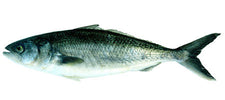
Kahawai – How to Catch Them
, by NZDiver Admin, 5 min reading time

, by NZDiver Admin, 5 min reading time
Kahawai are one of New Zealand’s most exciting and accessible inshore sportfish. Found everywhere from surf beaches to river mouths, they offer fast, surface-feeding action and powerful fights on light gear. Learn how to find kahawai by following bird workups, choose the best tackle and lures, and master proven techniques for both boat and shore fishing. Whether you’re after sport, bait, or a fresh feed from the smoker, kahawai deliver unbeatable Kiwi fishing fun.
For years I wished there were more inshore sportfish species to target in New Zealand waters. Realistically though, the only way that was ever going to happen was if a school of striped bass or mulloway somehow got totally lost and ended up living here. No ministry or agency would ever allow them to be introduced – and rightly so.
So, the best solution has been to travel overseas and fish for other species in their natural habitats. But those experiences taught me something important: we’re incredibly lucky to have kahawai right here at home.
Kahawai are found throughout New Zealand and thrive in almost every marine environment — from harbours and estuaries to river mouths and surf beaches. They’ll take a variety of lures and techniques, often bite freely, and are known for their explosive fights, leaps, and stamina.
The Māori name kahawai roughly translates to “strong in the water” — a perfect description for this hard-fighting sportfish.
Most kahawai are caught by chance when they crash baitfish schools near the surface, but with a bit of skill, you can actively target them.
The key is to read the bird activity. The best indicator species is the little black-headed tern — often called the “kahawai bird.” When these terns hover or dive in groups, there’s a good chance kahawai are feeding just beneath them.
Hovering terns: Kahawai are balling up baitfish near the surface.
Diving terns: Fish are actively feeding.
Birds moving off: The school has dispersed — time to relocate.
Stay mobile and follow the birds — kahawai fishing is an active, fast-paced game.
Spinning: Medium to light spin setup with 4 kg line is ideal.
Use a 2 m+ rod capable of casting 7–40 g lures.
Match with a reel holding ~300 m of 4 kg braid or mono.
Trolling/Jigging: A 6 kg overhead outfit works well.
Fly Fishing: A trout-weight rod makes for incredible sport.
Once you’ve located a school, position your boat upwind or beside the work-up and cast small metal lures into the school. Retrieve quickly just below the surface. Avoid driving into the school — it’ll push the fish down and stop the feed.
If you’re not getting hits:
Let your lure sink deeper and vary your retrieve.
Try changing lure size or colour.
When birds disperse, drop your lure to the bottom and jig it up through the water column — kahawai often hang deeper once surface feeding stops.
Soft plastics can be deadly on kahawai. Use smaller tails (3–8 cm) in silver, lumo, blue, or brown to imitate whitebait and anchovies.
Rig them on 7–12 g (¼–½ oz) jig heads with 2/0–3/0 hooks. Lighter heads keep your lure in mid-water, mimicking a wounded baitfish — often triggering aggressive strikes.
When the fish are up high, switch to heavier heads and crank your lure just below the surface, adding the occasional twitch for realism.
Kahawai are just as accessible from shore as they are from a boat. In fact, land-based anglers often have the advantage when fish are hunting in the wash or surf zones.
Spinning from river mouths, rock ledges, or surf beaches can be very productive — just use a slightly longer rod for casting distance.
When the fish aren’t visibly feeding, use berley to draw them in:
Deploy a steady trail of pilchard cubes, or hang skipjack frames in an onion sack.
In good spots, this can pull entire schools right to your feet.
Fish unweighted pilchard tails on 4/0 hooks for best results, and strike quickly to avoid deep-hooking.
If bites are slow, suspend your bait about a metre below a small float.
Kahawai can grow over 8 kg — the giant Kermadec kahawai is a subspecies — though anything over 2.7 kg (6 lb) is a prime specimen.
They also make excellent baitfish:
Whole kahawai for kingfish and marlin.
Large fillets for big snapper.
Smaller cubes for longlines or kite fishing.
For eating, bleed them if you prefer — but note the red flesh is mainly muscle, not blood. The key is humane dispatch and rapid chilling in a seawater-ice slurry.
Kahawai are now rightly recognised as superb table fare. Fresh sashimi is excellent, and smoked kahawai remains a Kiwi classic — a favourite with kids and adults alike.
Kahawai are New Zealand’s true inshore sportfishing heroes.
Accessible, aggressive, and always up for a fight — they deliver excitement for anglers of every skill level, whether you’re on the rocks, the beach, or the boat.
So next time you see those terns working the surface, grab your rod, get casting, and experience one of the best fights in Kiwi waters.




